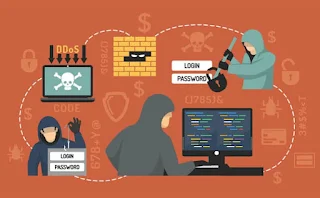Web application vulnerabilities are weaknesses or flaws in the design, implementation, or operation of a web application that could be exploited by attackers. Common vulnerabilities include:
1. **Cross-Site Scripting (XSS):** Allows attackers to inject malicious scripts into web pages viewed by other users.
2. **SQL Injection (SQLi):** Involves manipulating a web application's database by injecting malicious SQL code.
3. **Cross-Site Request Forgery (CSRF):** Forces users to perform unwanted actions without their consent by exploiting their authenticated sessions.
4. **Security Misconfigurations:** Incorrectly configured security settings or default configurations that expose sensitive information or allow unauthorized access.
5. **Insecure Direct Object References (IDOR):** Occurs when an application provides direct access to objects based on user-supplied input, leading to unauthorized access.
6. **Server-Side Request Forgery (SSRF):** Allows attackers to make requests to internal resources that should be inaccessible from the external network.
7. **Authentication Bypass:** Weaknesses in authentication mechanisms that enable unauthorized access to sensitive areas or data.
8. **File Upload Vulnerabilities:** Exploits flaws in file upload functionalities, allowing malicious files to be uploaded and executed on the server.
9. **Insecure Deserialization:** Can lead to remote code execution by manipulating serialized data.
10. **XML External Entity (XXE) Injection:** Exploits vulnerabilities in XML processors to disclose internal files or execute remote code.
Regular security assessments, code reviews, and adherence to secure coding practices help mitigate these vulnerabilities.
How to remediate?
Remediating web application vulnerabilities involves implementing security measures to address and eliminate the identified weaknesses. Here are some general strategies:
1. **Input Validation and Sanitization:**
- Validate and sanitize user inputs to prevent injection attacks like SQL injection and cross-site scripting (XSS).
2. **Use Parameterized Queries:**
- Employ parameterized queries or prepared statements in database interactions to thwart SQL injection attacks.
3. **Security Headers:**
- Implement security headers, such as Content Security Policy (CSP), to mitigate XSS attacks.
4. **Authentication Mechanisms:**
- Enforce strong authentication methods, such as multi-factor authentication (MFA), and ensure secure password storage practices.
5. **Access Controls:**
- Implement proper access controls and authorization mechanisms to prevent unauthorized access to sensitive data or functionalities.
6. **Secure File Uploads:**
- Restrict file types, validate file content, and store uploaded files in a secure location. Implement anti-virus scanning for uploaded files.
7. **Security Patching:**
- Regularly update and patch software, frameworks, and libraries to address known vulnerabilities.
8. **Security Configurations:**
- Review and configure security settings properly. Disable unnecessary services, features, or default accounts.
9. **Error Handling:**
- Customize error messages to provide minimal information to users and log detailed error messages for developers.
10. **Security Training:**
- Conduct security awareness training for developers and users to enhance their understanding of potential risks and secure coding practices.
11. **Web Application Firewalls (WAF):**
- Employ WAFs to filter and monitor HTTP traffic between a web application and the Internet, helping to block common web application attacks.
12. **Regular Security Audits and Penetration Testing:**
- Conduct regular security audits and penetration testing to identify and address vulnerabilities before attackers can exploit them.
13. **Monitoring and Incident Response:**
- Implement robust monitoring solutions and incident response plans to detect and respond quickly to security incidents.
Each application may have specific considerations based on its architecture and functionalities, so tailoring these measures to your specific context is crucial. Regularly reassess and update your security practices to stay ahead of emerging threats.
Risk.
Web application vulnerabilities pose various risks, potentially leading to severe consequences for both users and organizations. Here are some key risks associated with these vulnerabilities:
1. **Data Breaches:**
- Unauthorized access to sensitive data through vulnerabilities like SQL injection or insecure authentication can result in data breaches, compromising user information.
2. **Financial Loss:**
- Exploitation of vulnerabilities may lead to financial losses through theft, fraudulent transactions, or ransom demands.
3. **Reputation Damage:**
- A successful attack can harm an organization's reputation, eroding trust among customers, partners, and stakeholders.
4. **Legal Consequences:**
- Data breaches may result in legal consequences, including regulatory fines for non-compliance with data protection laws.
5. **Disruption of Services:**
- Successful attacks can disrupt web services, leading to downtime, loss of business continuity, and financial impact.
6. **Identity Theft:**
- Authentication vulnerabilities can be exploited for identity theft, allowing attackers to impersonate legitimate users.
7. **Loss of Intellectual Property:**
- Insecure handling of sensitive information may result in the theft or exposure of intellectual property.
8. **Compromised User Accounts:**
- Authentication weaknesses may lead to unauthorized access to user accounts, potentially enabling attackers to manipulate or misuse the account.
9. **Malware Distribution:**
- Vulnerabilities, such as those allowing file upload exploits, can be leveraged to distribute malware to users.
10. **Denial of Service (DoS) or Distributed Denial of Service (DDoS) Attacks:**
- Attackers may exploit vulnerabilities to launch DoS or DDoS attacks, causing service disruption by overwhelming the application with traffic.
11. **Business Email Compromise (BEC):**
- Security flaws can contribute to BEC attacks, where attackers gain unauthorized access to business email accounts for financial fraud or unauthorized actions.
12. **Compliance Violations:**
- Failure to address vulnerabilities may result in non-compliance with industry regulations and standards, leading to legal consequences.
13. **Customer Trust Erosion:**
- Publicized security incidents can erode customer trust, potentially causing users to abandon the affected services.
To mitigate these risks, organizations must prioritize and invest in robust cybersecurity measures, including regular security assessments, vulnerability management, and a proactive security posture. Regularly updating and patching systems, monitoring for suspicious activities, and educating both developers and users on security best practices are essential components of effective risk mitigation.

